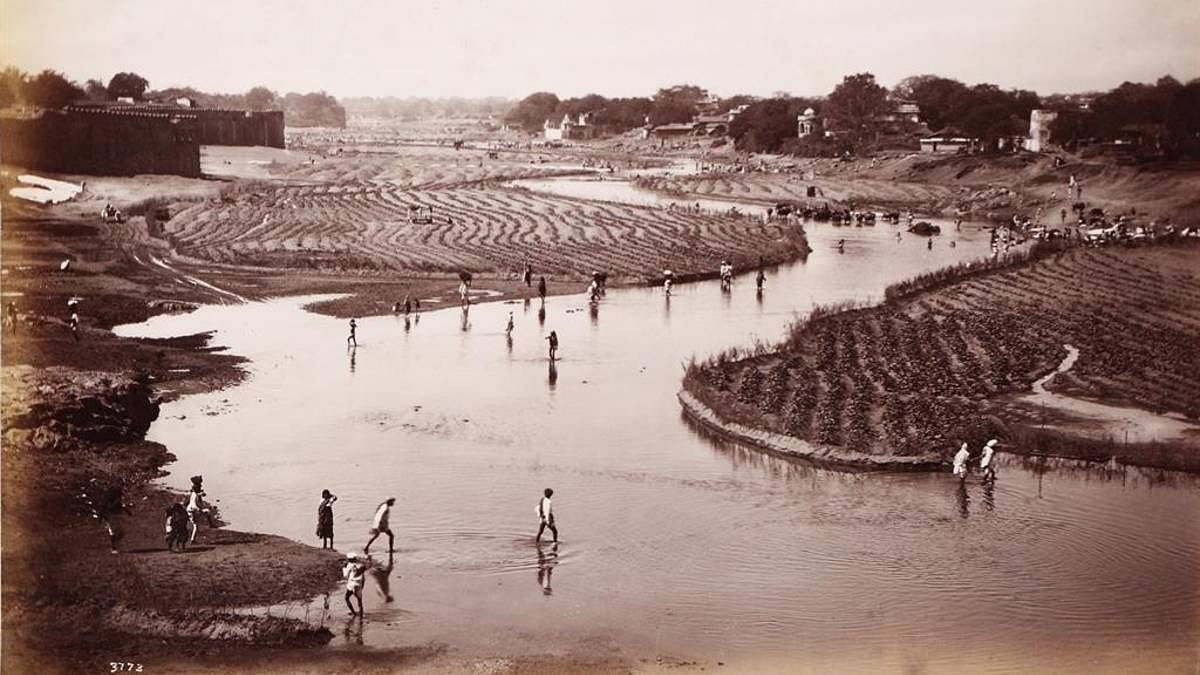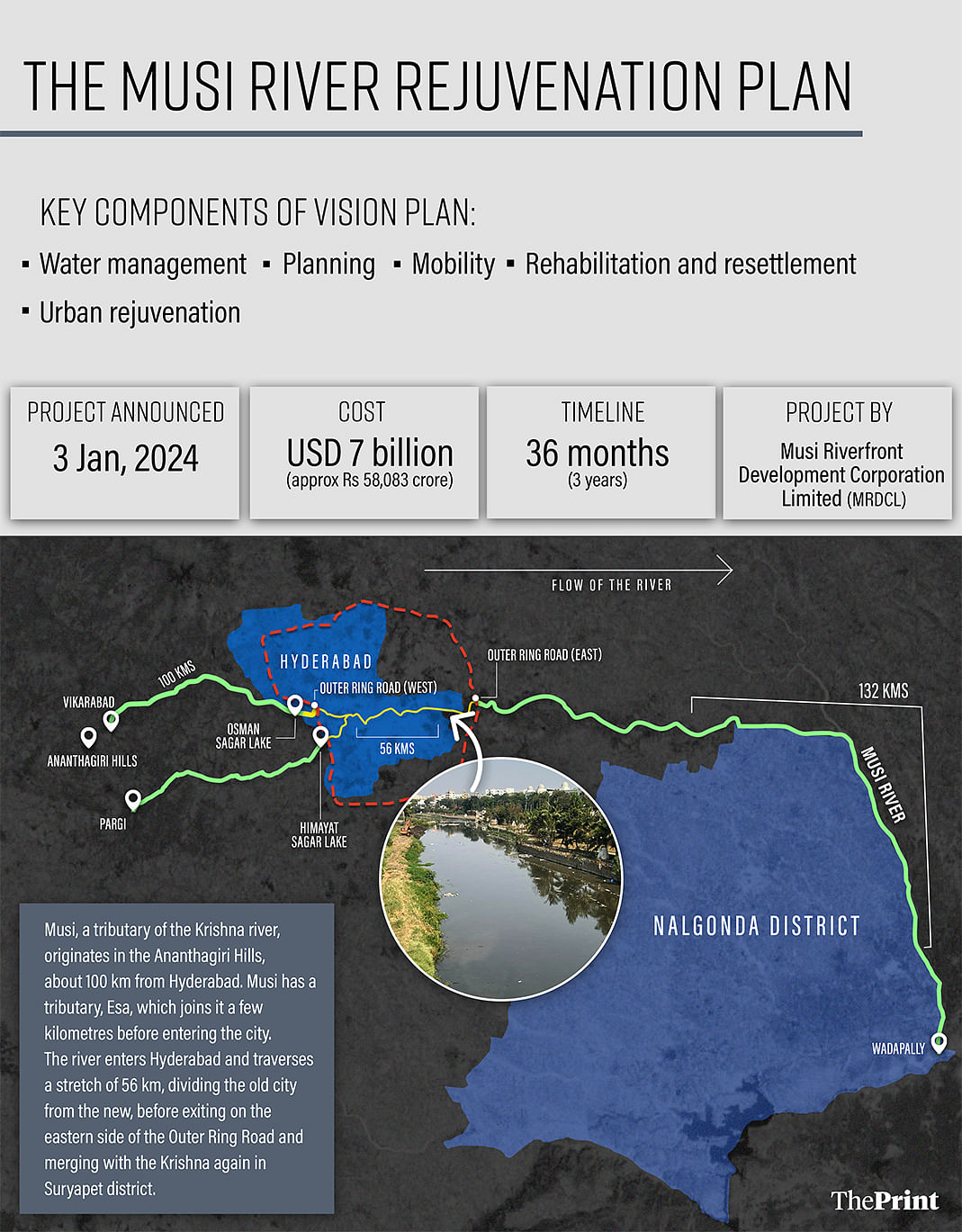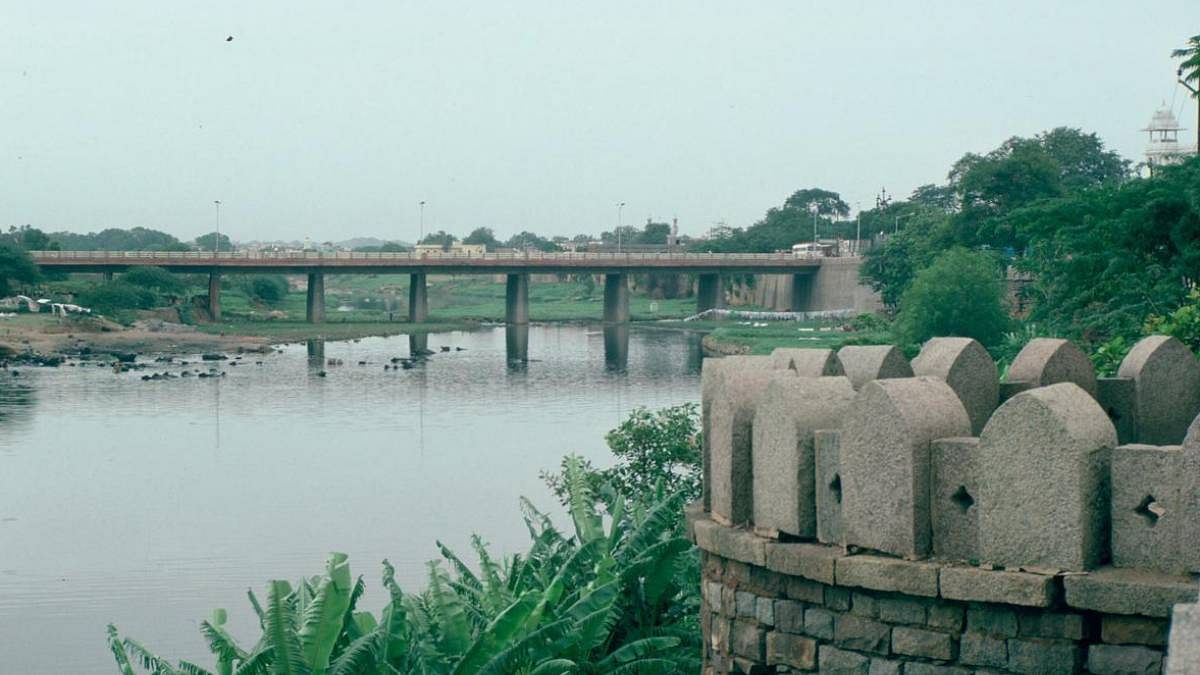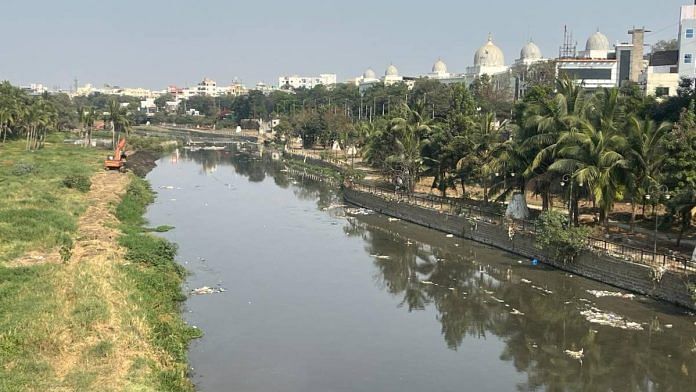Hyderabad: The first time there was talk of beautifying the Musi riverfront was over a hundred years ago in 1908, after a devastating flood had ravaged Hyderabad. The Musi was then a big river along which the city had come up.
The then government of the Nizam of Hyderabad State had summoned one of India’s noted civil engineers, Sir M. Visvesvaraya, to help suggest flood mitigation measures and ready a drainage master plan for the city.
In Memoirs of My Working Life published in 1951, Visvesvaraya wrote that while suggesting storage facilities above the city to impound the flood water in excess of what the Musi river channel could carry, he had also proposed raising the river banks in stretches within the city and converting portions of them into “walks and gardens to give the banks an artistic effect along the riverfront”.
While the Nizam built two reservoirs — Osman Sagar and Himayat Sagar — as a flood mitigation measure according to Visvesvaraya’s suggestion, the proposal to redevelop the riverfront did not take off.
Hyderabad has come a long way since then and the Musi river, once the lifeline of the city, is gasping for breath.
The 56-km stretch of the Musi flowing within the city has been reduced to a narrow, foul-smelling canal in almost the entire stretch, with only sewage water and industrial effluents flowing into the river. Massive encroachments in all shapes and sizes have come up in an approximately 20 km stretch of the dying river.
Hyderabad is now the capital of Telangana state, carved out of Andhra Pradesh in 2014. Since the mid-1990s, multiple Musi river redevelopment plans were made by different state governments of the day. But none saw light of day.
With the Congress having come to power in Telangana last December, new CM A. Revanth Reddy has again announced that the Musi’s rejuvenation will be one of the signature projects of his government. He has also set a 36-month timeline to complete it, though urban sector experts are skeptical that a project of this magnitude and complexity can be completed in three years.
Though at a very initial stage, senior Telangana government officials told ThePrint that the ambitious project is likely to cost approximately $7 billion (Rs 58,000 crore) and will be on the lines of the redeveloped Sabarmati riverfront in Gujarat.

Reddy and his team are already building the tempo.
On Saturday, Telangana finance minister Mallu Bhatti Vikramarka allocated Rs 1,000 crore for the project in the budget for the 2024-2025 fiscal. In January, the CM had visited London and Dubai to see the riverfront projects there and interacted with various stakeholders.
Officials from the Musi Riverfront Development Corporation Limited (MRDCL) have already visited Gujarat and Varanasi to study the Sabarmati and Ganga riverfront development. They have also visited Delhi to see the progress of the Yamuna rejuvenation project.
Earlier this month, the MRDCL invited global expression of interest for consultancy services for aggregate master planning for the Musi’s redevelopment.
The MRDCL was set up under Reddy’s predecessor K. Chandrashekar Rao-led Bharat Rashtra Samithi government to revive the dying river and beautify the riverfront at a cost of over Rs 8,000 crore.
During the tenure of previous governments, over three dozen sewage treatment plants (STPs) and more than a dozen bridges were constructed at different points across the river. But the river did not undergo any visible change.
“The ultimate goal is to bring life back to the river. Over the years, we had turned our back to it. Right now, it’s (river project) a big vision. But our plan is to redirect growth inwards into the city, with the river as the central point and by creating recreational, commercial, heritage and residential centres around it,” a senior MRDCL official, who did not want to be named, told ThePrint.
Also Read: Ken-Betwa river linking project is 1st in India to get cabinet nod, move comes ahead of UP polls
What is the Musi vision plan?
The Musi is a tributary of the Krishna river. It originates in the Ananthagiri Hills in Vikarabad, situated about 100 km away from Hyderabad. The river enters Hyderabad and traverses a stretch of 56 km, dividing the old city from the new before exiting on the eastern side of the Outer Ring Road and merging with the Krishna again in Suryapet district.
According to MRDCL officials, the $7-billion Musi project to revive the river’s entire ecosystem will comprise of five key components — water management, planning, mobility, rehabilitation and resettlement, and urban rejuvenation.
A second senior MRDCL official told ThePrint that in terms of scale, the Musi project is one of the most ambitious river redevelopment projects in India.

“The Sabarmati river, which was similar to the Musi before its redevelopment, traverses 11 km within Ahmedabad city but the Musi flows through a stretch of 56 km within Hyderabad. Also, the Musi’s stretch within the city passes through densely populated areas. Massive encroachments have happened. Rejuvenating such a river and beautifying the riverfront will be challenging,” the official said.
The official explained that the first challenge will be to get clean water to the river. Presently, the river is largely fed by sewage water except during the monsoon.

“The plan is to build STPs, sewer networks and storm water management techniques. Construction of 39 STPs will be taken up. In the way that Narmada river water was taken to the Sabarmati, we plan to link the Godavari to either of the two reservoirs at Osman Sagar and Himayat Sagar that will feed the Musi to ensure perennial water flow,” the official said.
Removing encroachments, which are largely concentrated in a 20 km stretch of the river’s path within the city, will also be a tough task.
“It will not be easy. All kind of encroachments, small and big, residential and commercial, have come up. We have to build consensus…. The encroachers have to be convinced about the value accruing from the project, the livelihoods it will help generate. Adequate compensation will have to be given. Only then they will move,” the second official added.
Urban sector experts in Hyderabad cite how the Nandanavanam project, undertaken in 1997 to beautify the Musi by N. Chandrababu Naidu, the then CM of undivided Andhra Pradesh, had to be shelved because slum-dwellers had started protests.
“The government had proposed to relocate the residents of several slums from the riverbank to the outskirts of the city, to beautify and develop commercial property along the riverfront. While the government was partially successful in evicting or relocating some squatter settlements, the majority of slums did not budge because they were all legally notified slums,” said Anant Maringanti, director of Hyderabad Urban Lab, an urban think-tank.
“They were connected to services such as electricity, water and sewer mains and had received several rounds of infrastructural investment from the government over the years. They succeeded in securing the support of urban environmentalists and downstream farmers to start a campaign under the banner of Musi Bachao Andolan. The government of the day had to ultimately junk the plan,” he added.
Maringanti, an economic and urban geographer, earned a PhD from University of Minnesota on opposition to urban development projects around the Musi river.

The Musi river beautification plan was again revived in 2005 during the time of then CM Y.S. Rajasekhara Reddy. But this also did not make much headway.
Professor V. Srinivas Chary, director, Centre for Environment, Urban Governance & Infrastructure Development at Administrative Staff College of India, Hyderabad, told ThePrint that any river rejuvenation anywhere in the world takes 15-20 years to be completed.
“If political will is there then doability is not an issue. The authorities have to stay the course and need to implement the project in stretches. But demonstration (of work) can happen in five years,” Chary said.
Another important component of Musi river development involves building mobility corridors. “The idea is to connect the eastern and western part of the city along the river to streamline things. Transport and logistics hubs will be developed along the mobility corridors,” the second MRDCL official said.
The official added that beautification of the riverfront and urban rejuvenation of the surrounding areas will be taken up after the encroachments are removed.
“The plan is to have people’s plaza, cycle tracks, green spaces, sports facilities, bridges with hawker zones, among others. Land parcels will be identified along the river for developing recreational and tourist spots,” the second official said.
Besides, heritage structures in the old city along the river will also be renovated and developed as tourist attractions as part of the project. “All the heritage structures in the area will be mapped. The entire river ecosystem will be revived,” the first official said.
Monetising land assets to finance project
To make the project financially viable, the vision plan also talks about monetising land assets. “There will be a commercial component involved. A significant portion of the project cost will be funded by commercialisation of identified land parcels around the river,” the first official said.
Professor Chary pointed out that land monetisation was key to raising revenue. “All we are doing is beautifying the river and taking advantage of it. It’s okay as long as we are not messing up the ecology of the area,” he said.
The MRDCL has proposed to raise finances through a variety of sources — multilateral agencies, monetisation of assets, central funds under various urban rejuvenation schemes, private players, etc.
Maringanti said that river redevelopment plans should not be exclusively looked as real estate projects.
“The plans prepared by various governments over the years did not work because there was no long-term regional vision. They were piecemeal in nature. Riverfront development is a great strategic opportunity for the government to integrate the distinct cultural, economic and social formations of the old city and the new city on the southern and northern sides of the river, and the IT and the manufacturing cultures of the western and eastern sides of the city,” he told ThePrint.
He added: “The river connects the rural to the urban in many important ways. The city has multiple stakeholders. They can be brought on board through a location-sensitive urban design approach that handles development location-by-location and avoids a heavy-handed, socially blind territorial approach.”
According to Chary, the positive thing about the present vision plan is that the government is not looking only at Musi river’s rejuvenation but holistic development of economic opportunities along the river ecosystem.
“For Sabarmati too, they improved the river ecosystem and used it for recreational purposes. Look at the Thames river in London. They have created economic opportunities using the river as a central feature. Plan to create economic and cultural opportunities around the river and use the riverfront for economic growth, only then the project will be successful,” he said.
(Edited by Nida Fatima Siddiqui)
Also Read: How Farakka barrage & govt’s river linking project can sink Ganga-Brahmaputra-Meghna delta




I think Changing Mindsets of people living around is going to be real game changer than anything else.